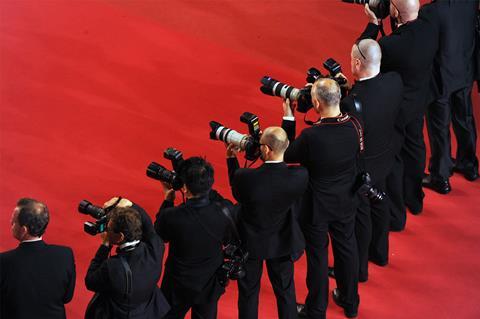
The vast majority of US and international film festivals remain inaccessible to disabled participants, an accessibility report has revealed.
The inaugural findings of the Accessibility Scorecard Impact Report detail that 73% of the disabled respondents of its wide-ranging survey experienced inaccessibility during film festivals.
The Scorecard organisers include FWD-Doc (Filmmakers With Disabilities), the Film Event Accessibility Working Group (FEAW) and the Film Festival Alliance (FFA).
Compiled between July 2022 to November 2023, the report features 353 responses from the attendees of 75 festivals worldwide, including the Berlinale, Sundance, SXSW and Tribeca. Overall, 93% of festivals received scores below the median on the Accessibility Scorecard, with just 7% scoring above the median.
Other findings revealed 77% of respondents said live captions were not available for in-person panels and Q&As, while 61% said closed captioning for films, panels and Q&As are not functional or high quality.
“Captiview [personal closed captioning devices used in cinemas] is not the answer,” said one anonymous respondent. “This version of in-person [closed captioning] is insufficient and dehumanizing. Open Captions are truly the only way to go for an in-person festival experience.”
Elsewhere, 51% of respondents said in-person festival or film events did not provide American Sign Language (ASL) or applicable sign-language interpreters.
One respondent explained: “It was disappointing to have to tell cast members they could not attend festival events or accept invitations to dinners/parties because we were unable to provide an interpreter.”
The Scorecard organisers said the film circuit has a history of disabled film patrons, filmmakers, press and other delegates experiencing a lack of accessibility at events and festivals. However, the industry has, to date, lacked the standardised feedback mechanisms to quantify and qualify accessibility.
The Scorecard was created to address the need for data. Effectively a survey, it consisted of 70 questions — presented on a five-point scale — ranging from demographics to experiences attending a specific film festival, with room to provide comments. It was sent to members and festival partners of the FFA and FWD-Doc, but festivals that are not part of either organisation could also request to get feedback from the Scorecard. Meanwhile, respondents could submit feedback on any event or festival they attended, whether the organisers had opted-in to receiving feedback or not.
The issues faced at festivals by participants with disabilities include standing-only registration windows, accreditation desks and computer kiosks too high for wheelchair users, screening reservation systems that fail to detail the availability of captioning or other accessibility options and no mobility assistance between festival venues.
Cannes, which just wrapped its 77th edition last month, did not take part in the Scorecard, nor did the Venice or Toronto film festivals. However, organisers told Screen the Berlinale and European Film Market (EFM) went to great lengths to get accessibility feedback and worked with FWD-Doc for a year. The EFM hosted a large coalition of disabled filmmakers in February.
Even so, the Berlinale was not among the top-scoring festivals. The five that scored above the median included the Superfest Disability Film Festival, BlackStar Film Festival, International Queer Women of Color Film Festival, Access:Horror Film Festival and New Orleans Film Festival. Notably, all five target underrepresented groups in film, and have annual operating budgets of under $3m.
Accessibility solutions
Organisers believe that prioritising and investing in five specific areas could boost accessibility at festivals.
They include: live captions for panels and Q&As; low-sensory spaces (specially designed, calming environments that can be used by those who are neurodivergent); closed captioning for films, panels and Q&As; American Sign Language (ASL) or an applicable sign language interpreter; easy-to-find accessibility information on websites and/or event staff who are knowledgeable of available access at the festival.
A full set of recommendations and detailed advice from the Scorecard organisers can be found in the impact report. Film festivals and events looking to improve their accessibility are also encouraged to register for feedback from the Scorecard.
Cassidy Dimon, founder of the Film Event Accessibility Working Group and developer of the Scorecard questionnaire, said: “We have heard anecdotally about inaccessibility at film events for years. Through the Scorecard Impact Report we now have specific data that validates individual experiences and provides clear takeaways for the industry and funders to drive equity through accessibility in the film exhibition space.”
Amanda Upson, interim director of FWD-Doc, said: “Inaccessible festivals and film events adversely impact all entertainment industry earnings because they prohibit disabled filmmakers from progressing their careers and projects, ultimately barring disabled filmmakers from reaching the entertainment industry which repeatedly demonstrates that, without disabled filmmakers’ expertise, it cannot unlock the $13 trillion in disposable income held by the global disability community.”
Adds Film Festival Alliance executive director Barbara Twist: “Film festivals are incredible spaces that build community. Organisers now have a roadmap for expanding access which can expand audiences, career opportunities for filmmakers with disabilities, and extends the vibrant festival experience to all.”
Oscar-nominated director and FWD-Doc co-founder Jim LeBrecht adds: “We all want to feel welcome and included, and want to have the opportunity to participate fully in events and activities. Accessibility doesn’t just benefit people with disabilities; it benefits everyone. Nondisabled attendees benefit from disabled filmmakers in the room. We bring experience and valuable perspectives.”






![The Brightest SunScreen[Courtesy HKIFF]](https://d1nslcd7m2225b.cloudfront.net/Pictures/274x183/3/5/0/1448350_thebrightestsunscreencourtesyhkiff_312678.jpg)


















1 Readers' comment